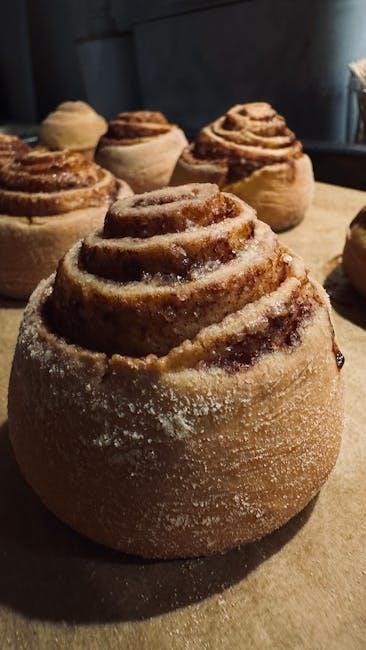Overview of Famowood Glaze Coats
Famowood Glaze Coats are popular amongst professionals and do-it-yourself enthusiasts for preserving artwork and photographs to coating tables and countertops.
The pour-on epoxy coating provides a durable, corrosion-resistant layer to various surfaces, making it a versatile product for different applications.
Famowood Glaze Coats have a wide range of uses, from decorative to functional, and are recommended for interior use only.
They are available in different formulations to suit various needs and are known for their high-quality finish and durability.
The product is easy to apply and can be used on a variety of surfaces, including wood, metal, and glass.
Overall, Famowood Glaze Coats are a reliable and effective product for achieving a professional-looking finish on various projects.
Importance of Surface Preparation
Proper surface preparation is crucial for a successful glaze coat application.
The surface must be clean, dry, and free of any dirt, oil, or wax.
Using bleach to clean the surface is not recommended, as it can affect the adhesion of the glaze coat.
A thorough cleaning and preparation of the surface will ensure a strong bond between the glaze coat and the surface, resulting in a durable and long-lasting finish.
It is also important to ensure that the surface is at the same temperature as the glaze coat to prevent any potential issues.
By following proper surface preparation techniques, users can achieve a professional-looking finish and ensure the longevity of the glaze coat.
This step is essential for a successful application and should not be overlooked.

Application Instructions
Follow specific application steps and guidelines carefully always.
Basic Application Procedures
To apply glaze coat, start by preparing the surface, ensuring it is clean and dry. The application process typically involves mixing the glaze coat with a hardener, then pouring it onto the surface; It is essential to follow the instructions provided with the product for the correct mixing ratio and application technique. The glaze coat should be applied in a thin, even layer, allowing it to spread and self-level. This process can be repeated for multiple coats, with the recommended drying time between coats. The basic application procedure is crucial for achieving a smooth, even finish and ensuring the longevity of the glaze coat. By following these steps, you can achieve professional-looking results and enjoy the benefits of a durable, corrosion-resistant surface. Proper application is key to a successful glaze coat project, and attention to detail is necessary.
Special Considerations for Large Surfaces
When applying glaze coat to large surfaces, such as bar tops and table tops, special attention must be given to the mixing and application procedures. The size of the application requires careful planning to ensure a smooth, even finish. It is essential to work in sections, applying the glaze coat in a consistent and controlled manner. This will help to prevent drips, runs, and other imperfections. Additionally, the temperature and humidity of the workspace should be carefully monitored to ensure optimal conditions for the glaze coat to cure. By taking these special considerations into account, you can achieve a professional-looking finish on large surfaces, and enjoy the benefits of a durable, corrosion-resistant glaze coat. Proper technique and patience are key to a successful application on large surfaces, and will help to ensure a long-lasting finish.

Heat Resistance and Safety
Heat resistance and safety guidelines are crucial for glaze coat applications always.
Heat Resistance Guidelines
Heat resistance guidelines for glaze coat applications are essential to ensure durability and longevity. Items cooler than 120 F can be placed on surfaces without problems. Using a coaster or hot pad is recommended to prevent distortion. Glaze coat is suitable for interior use only and should not be used on hot surfaces. The heat resistance guidelines provide a clear understanding of the limitations and precautions required when working with glaze coat. By following these guidelines, users can ensure a successful application and maintain the quality of the glaze coat. Proper use and care will extend the life of the glaze coat and prevent damage or deterioration. It is crucial to follow the heat resistance guidelines to achieve the desired results and avoid any potential issues. Always use caution when working with glaze coat and follow the recommended guidelines.
Safety Precautions
Safety precautions are necessary when working with glaze coat to prevent accidents and ensure a safe environment. It is essential to follow the instructions carefully and take necessary precautions to avoid exposure to harmful chemicals. The glaze coat should be applied in a well-ventilated area, and users should wear protective gloves and eyewear. In case of skin or eye contact, wash immediately with soap and water. Keep the glaze coat out of reach of children and pets. Follow the recommended application and drying times to prevent fires or explosions. By taking these safety precautions, users can minimize the risks associated with glaze coat and ensure a successful application. Always read the label and follow the safety guidelines to ensure a safe and healthy working environment with glaze coat applications and proper use.

Advanced Application Techniques
Advanced techniques involve specialized tools and materials for glaze coat application purposes only.
Spraying and Airbrushing
When using spraying and airbrushing techniques, it is essential to invest in a good quality airbrush for a smooth finish. The glaze coat should be mixed according to the instructions and applied in a well-ventilated area. A thickness of around 1mm is recommended for a lovely even finish without drips and runs. It is crucial to experiment and determine what works best for the specific project. The airbrush allows for a high level of detail and control, making it ideal for intricate designs and small surfaces. By following the correct procedures and using the right equipment, spraying and airbrushing can produce professional-looking results with glaze coat applications, and the outcome will be a beautifully finished surface. The process requires patience and practice to achieve the desired outcome.
Multiple Coats and Finishing
Multiple coats of glaze can be applied to achieve the desired finish, with each coat allowing for additional layers of protection and decoration. The process of applying multiple coats requires careful planning and execution, as each layer must be allowed to cure before the next is applied. Finishing techniques, such as using a knife or other tool to remove excess glaze, can be used to smooth out the surface and achieve a high-gloss finish. The number of coats and finishing techniques used will depend on the specific project and desired outcome. By applying multiple coats and using various finishing techniques, a beautifully finished surface can be achieved, with a durable and long-lasting glaze coat that protects and enhances the underlying material. This process allows for a wide range of creative possibilities and applications.

Curing and Drying Times
Curing times vary depending on temperature and humidity conditions always.
Curing and Drying Guidelines
Glaze coat curing and drying guidelines are crucial for a successful application. The temperature and humidity conditions play a significant role in the curing process. According to the instructions, Glaze Coat will fully cure in 72 hours. It is recommended to allow fresh pours to cure in a warm room with a temperature of at least 70 F. This ensures a proper and even curing process. Additionally, it is essential to follow the recommended curing times to achieve the desired results. By following these guidelines, users can ensure a durable and long-lasting finish. Proper curing and drying are critical to the overall performance of the Glaze Coat. It is also important to note that the item to be coated and the Glaze Coat should be at the same temperature for optimal results. This ensures a strong bond between the coat and the surface.
Temperature Considerations
Temperature considerations are vital when working with Glaze Coat. The ideal temperature for application and curing is between 70 F to 80 F. It is essential to ensure that the surface and the Glaze Coat are at the same temperature to achieve a strong bond. Temperature fluctuations can affect the curing process and the final result. If the temperature is too low, the curing process may be slowed down, while high temperatures can cause the Glaze Coat to cure too quickly. It is recommended to avoid applying Glaze Coat in direct sunlight or extreme temperatures. By controlling the temperature, users can ensure a successful application and a durable finish. Proper temperature considerations will help to prevent defects and ensure a long-lasting result. This is crucial for achieving a professional-looking finish.